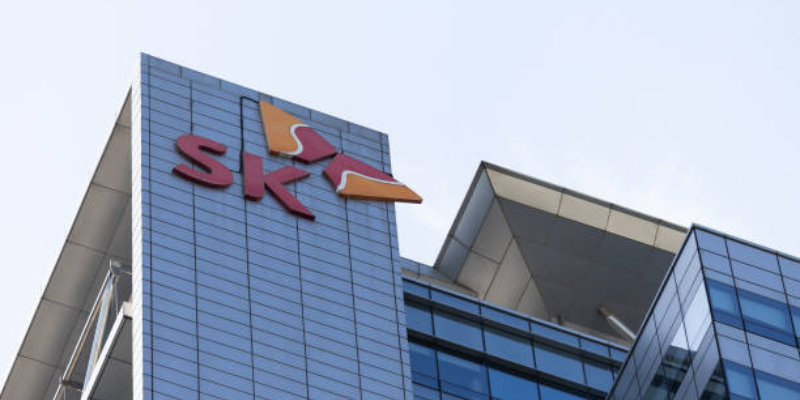SK Hynix plans to spend $75 billion on chips by 2028, with an emphasis of 80% on AI-enhanced HBM processors.
TakeAway Points:
- SK Hynix intends to invest $74.8 billion by 2028, with an emphasis of 80% on high-bandwidth memory chips for artificial intelligence applications.
- The goals of SK Group are to secure 30 trillion won in free cash flow over three years and to create 80 trillion won by 2026.
- SK Group hopes to turn a pretax profit of 22 trillion won this year and up to 40 trillion won by 2026, despite losing $10 trillion the previous year.
Large-scale Investment Schemes
SK Hynix Inc., the semiconductor arm of SK Group, has announced a significant investment plan amounting to 103 trillion won ($74.8 billion) through 2028. This move underscores the conglomerate’s commitment to strengthening its position in the semiconductor sector, which it views as crucial for future-proofing its businesses.
High-bandwidth memory (HBM) chips would receive almost 80% of this expenditure, or 82 trillion won, according to a statement made public by SK Group on Sunday. The fact that these HBM chips are designed to work with Nvidia Corp.’s AI accelerators emphasises SK Hynix’s emphasis on AI technology.
As part of the group’s larger AI plan, SK Telecom Co. and SK Broadband Co. will invest 3.4 trillion won in their data centre operations in addition to the semiconductor investments. This plan is the result of two days of intense talks with approximately 20 senior executives and SK Group Chairman Chey Tae-won, who mapped out the future course of the country’s second-largest business group, after Samsung. The meetings were part of an annual strategy series.
Financial Objectives and Challenges
The stakes are particularly high for SK Group this year, as Chairman Chey Tae-won faces a $1 billion divorce settlement. Speculators have suggested that Chey might take steps to boost the conglomerate’s financial performance to meet this obligation.
The group aims to generate 80 trillion won by 2026 from operations and business overhauls, with a target of securing 30 trillion won in free cash flow over the next three years to maintain a debt-to-equity ratio below 100%.
Despite a loss of 10 trillion won last year, SK Group expects to post a pretax profit of 22 trillion won this year, with a goal of increasing this to 40 trillion won by 2026. This ambitious financial turnaround is part of the group’s broader strategy to revive its fortunes after significant losses in its main money-making units, including SK Hynix and its electric vehicle battery arm.
Strategic Priorities: Semiconductors and AI
SK Group’s investment plans are not limited to South Korea. Earlier this year, SK Hynix announced a $3.87 billion investment to build an advanced packaging plant and research center for AI products in Indiana. Domestically, the company is spending $14.6 billion on a new memory chip complex and other investments, including the Yongin Semiconductor Cluster.
The group’s strategy meeting also emphasized the need for “preemptive and fundamental change,” as stated by Chairman Chey Tae-won. The executives agreed to gradually reduce the number of subsidiaries to a “manageable range,” although the scale of this reduction was not specified. Local media have speculated that SK Innovation Co., which owns the country’s largest oil refiner and battery maker, SK On Co., might pursue a merger with the profitable gas affiliate SK E&S Co.








